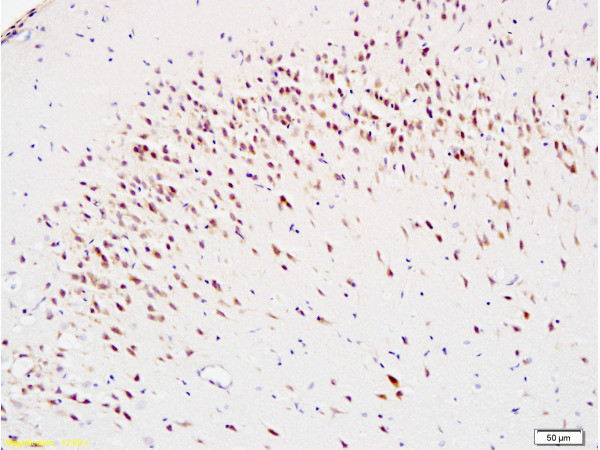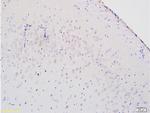Search Thermo Fisher Scientific
Product Details
BS-1278R
Species Reactivity
Host/Isotype
Class
Type
Immunogen
Conjugate
Form
Concentration
Purification
Storage buffer
Contains
Storage conditions
Shipping conditions
Target Information
Oxygen is necessary for aerobic life, it can also participate in potentially toxic reactions involving oxygen free radicals and transition metals such as iron that damage membranes, proteins, and nucleic acids. n a normal human cell, there is a steady accumulation of DNA lesions with time. Substantial parts of these lesions are due to endogenous factors that damage DNA. These include reactive oxygens pecies derived from oxidative respiration. Additionally, malignant cells can produce hydrogen peroxide at levels as high as those characteristics for stimulated polymorphonuclear leukocytes. Some tumors may stimulate the defense systems of the body so that they react against the tumor to produce cytokines. Some cytokines can produce large amounts of ROS. 8-OHdG is one of the most widely studied lesions of this type. The presenceof 8-OHdG residues in DNA leads to GC to TA transversion unless repairs are made before DNA replication. Therefore, the presence of 8-OHdG may lead to mutagenesis. Furthermore, many observations indicate a direct correlation between 8-OHdG formation and carcinogenesis in vivo. It is generally accepted that the repair products of cellular DNA, for example 8-OHdG, are excreted into the urine without further metabolism. Therefore, 8-OHdG has been proposed as a urinary biomarker for in vivo oxidative DNA lesions.
For Research Use Only. Not for use in diagnostic procedures. Not for resale without express authorization.
References (0)
Bioinformatics
Protein Aliases: 8-Hydroxyguanosine; 8OHdDG

Performance Guarantee
If an Invitrogen™ antibody doesn't perform as described on our website or datasheet,we'll replace the product at no cost to you, or provide you with a credit for a future purchase.*
Learn more
We're here to help
Get expert recommendations for common problems or connect directly with an on staff expert for technical assistance related to applications, equipment and general product use.
Contact tech support


